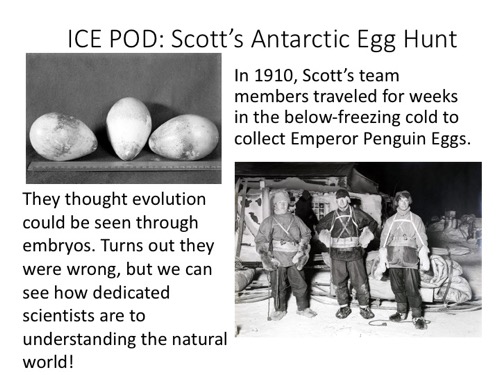12 Hours in Sydney
Layovers aren't always bad. Because we had 12 hours between arriving in Sydney and departing for New Zealand, we had time to visit the city. Although it was raining, Andrew, Terry, Carl and I walked over the Sydney Harbor Bridge, which is the tallest steel arch bridge in the world. From there we had a lovely view of the Sydney Opera House.
 Michelle Brown smiles in on the Harbor Bridge overlooking the Opera House in Sydney.
Michelle Brown smiles in on the Harbor Bridge overlooking the Opera House in Sydney.
We strolled through the harbor area and spent some time in the Botanical Garden. It was nice to be amidst greenery and fresh air after many hours in planes and airports. We saw Australian White Ibis in the gardens. Although these birds seem exotic, they are considered a nuisance, since they are prevalent on city streets and have been known to steal food.
 An Ibis stands on a bench in the Botanical Gardens in Sydney, with the Opera House and bridge in the background.
An Ibis stands on a bench in the Botanical Gardens in Sydney, with the Opera House and bridge in the background.
The CDC
After a lengthy layover in Sydney, we flew into Christchurch, New Zealand very late at night. Early this morning we went to the Clothing Distribution Center (CDC), where we learned more about our upcoming trip to McMurdo Station and received our Extreme Cold Weather (ECW) gear.
 Antarctic researchers and staff head into the Clothing Distribution Center to get oriented and receive gear.
Antarctic researchers and staff head into the Clothing Distribution Center to get oriented and receive gear.
ECW Before and After
It can become difficult to identify people once they put on their ECW gear. Luckily everyone wears a name-tag on their red coat!
 Michelle Brown before trying on her Extreme Cold Weather gear.
Michelle Brown before trying on her Extreme Cold Weather gear.
 Michelle Brown after trying on her Extreme Cold Weather gear.
Michelle Brown after trying on her Extreme Cold Weather gear.
CDC Reunion
At the CDC I ran into an old friend from 2011, Guy Calveit. Guy works at the CDC and is very helpful in getting scientists and staff the right gear. He also is a Steelers fan, like me.
 Michelle Brown and Guy Calveit in 2011.
Michelle Brown and Guy Calveit in 2011.
 Michelle Brown and Guy Calveit, a little older and wiser, in 2015.
Michelle Brown and Guy Calveit, a little older and wiser, in 2015.
A Visit to Heaton School
After making sure we were prepared for Antarctica, Terry, Carl and I headed to the Heaton Normal Intermediate School, where we talked to students about our research trip, discussed some of the animals we will see and shared the ECW gear with students.
 Michelle Brown and Terry Palmer discuss their upcoming research with students at the Heaton School in Christchurch, New Zealand.
Michelle Brown and Terry Palmer discuss their upcoming research with students at the Heaton School in Christchurch, New Zealand.
 Carl Green and Terry Palmer have Heaton School students try on the big red coat and bunny boots.
Carl Green and Terry Palmer have Heaton School students try on the big red coat and bunny boots.
All Blacks Parade
Following the school visit, we joined many Christchurch locals in celebrating the national rugby team, All Blacks, who recently won the World Cup!
 Proud Kiwi, Terry Palmer, sports an All Blacks jersey at the parade in Christchurch.
Proud Kiwi, Terry Palmer, sports an All Blacks jersey at the parade in Christchurch.
 A marching band starts the festivities for the All Blacks victory parade.
A marching band starts the festivities for the All Blacks victory parade.
 All Blacks rugby team members show off their World Cup at the victory parade.
All Blacks rugby team members show off their World Cup at the victory parade.
All in all, it's been a whirlwind day. Tomorrow we will head back to the CDC at 4:45am and hopefully fly to McMurdo Station.
Critical Thinking Answer
In the last journal I asked why an airplane would be required to fly with 100 less people heading from Dallas to Sydney than the return flight. Students at Park Forest Elementary in State College, PA wrote in a very close correct response. When we head from Dallas to Sydney we are heading West (as well as South), while the jet stream (a high "river" of wind) flows from East to West. Flying against the jet stream requires more energy, and therefore more fuel. A heavier plane also requires more fuel, so by making the plane lighter on the trip to Sydney, we have enough fuel to tackle those jet streams. On the return flight from Sydney to Dallas, we will be flying with the jet stream and will not need more fuel to overcome it, therefore the plane can be full.
Ice POD
Today's Ice POD is about the quest for Emperor Penguin Eggs during Scott's expedition:
You can access a PowerPoint Slide of the Ice POD by clicking here: 3_icepod.pptx
 Ice picture of the day about the quest for Emperor Penguin Eggs during Scott's expedition.
Ice picture of the day about the quest for Emperor Penguin Eggs during Scott's expedition.
Comments